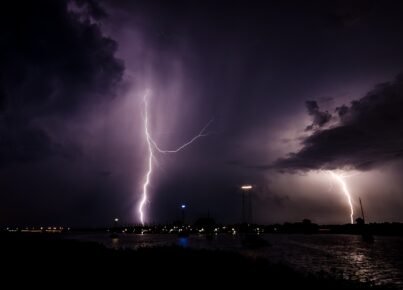Introduction
In a previous blog post, we explored the challenges that make harnessing lightning for electricity a fascinating yet impractical idea with our current technology. However, the realm of science and technology is no stranger to turning the seemingly impossible into the possible. In this follow-up post, we’ll delve into theoretical frameworks and emerging technologies that could one day make it feasible to capture lightning for electricity.
Directing Lightning to a Specific Location
One of the primary challenges of harnessing lightning is its unpredictability. To address this, researchers could look into creating ‘lightning farms’ where conditions are artificially manipulated to attract lightning. This could involve the development of tall, conductive structures designed to act as lightning rods. Advanced meteorological techniques could also be employed to better predict the timing and location of lightning strikes.
Rapid Energy Capture Technology
To make the most of lightning’s short duration, we would need an ultra-fast energy capture and storage system. Supercapacitors could be the answer to this issue, as they can charge and discharge much faster than conventional batteries. However, they would need to be significantly advanced from their current state to handle the instantaneous power levels produced by a lightning bolt.
Safety Measures and Insulation
Ensuring the safety of the entire operation is crucial. Advanced insulating materials capable of withstanding extremely high voltages and temperatures would need to be developed. Graphene or some future nanomaterial might offer the necessary properties.
Heat and Light Conversion
Since a significant amount of a lightning bolt’s energy is released as heat and light, systems could be developed to convert these forms of energy as well. Thermoelectric materials, which convert heat into electricity, could be integrated into the design. Advanced photovoltaic cells could potentially capture the intense light emitted during a lightning strike.
Advanced Monitoring and Control Systems
A successful lightning-harnessing operation would require an advanced monitoring and control system to manage the rapid capture, storage, and distribution of electricity. Machine learning algorithms could be used to optimize these processes, learning from each lightning strike to improve efficiency.
Energy Distribution and Grid Integration
Once captured, the energy must be rapidly distributed to where it is needed or stored for later use. This would require a highly responsive grid system capable of accommodating large energy influxes at random intervals. Advanced grid technology, possibly involving real-time analytics and smart grids, would be crucial.
Ethical and Environmental Considerations
Finally, there would be environmental and ethical considerations to explore. For example, diverting lightning away from its natural course could have unforeseen ecological impacts. Regulatory frameworks would need to be developed to manage these and other concerns.
Conclusion
While the idea of harnessing lightning for electricity remains in the realm of theoretical possibility, technological advancements could eventually make this dream a reality. From rapid energy capture technologies to advanced safety measures and grid integration, there is a lot to consider and develop. As our understanding of materials science, electrical engineering, and meteorology advances, we might find ourselves closer to capturing one of nature’s most awe-inspiring phenomena for the betterment of humankind.









